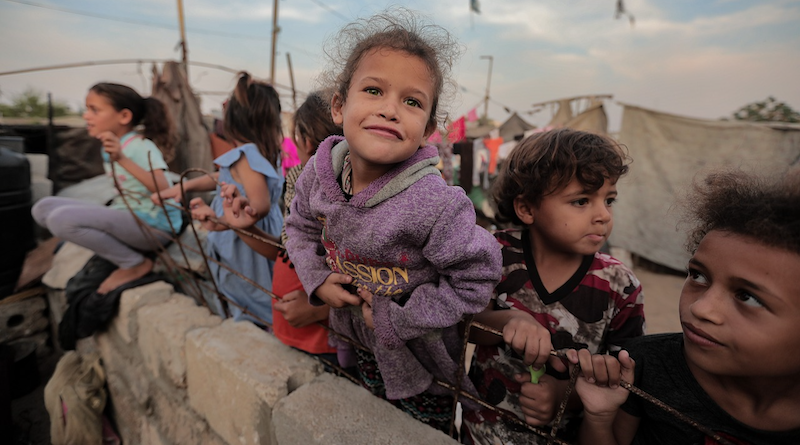Gaza Strip: A Glimpse Into A Region In Crisis – OpEd
The Gaza Strip, a narrow piece of land located along the eastern Mediterranean coast, is one of the world’s most densely populated areas. It has long been at the center of international attention due to its complex political, humanitarian, and demographic situation.
With an area of just 365 square kilometers (141 square miles), Gaza is home to over two million people, making it one of the most densely populated places on Earth. The high population density places immense pressure on resources, infrastructure, and services. Gaza has a disproportionately young population. Almost 50% of the total population is comprised of youth of the age of 18 years. This youthful demographic structure has both potential advantages and challenges. On one hand, it offers the potential for future development, but on the other, it places increased demands on education, employment, and social services.
Many of Gaza’s residents are Palestinian refugees or their descendants, displaced from their homes during the Arab Israeli conflicts. The United Nations Relief and Works Agency for Palestine Refugees (UNRWA) provides vital services to this population, including education, healthcare, and relief.
The gender distribution in Gaza is relatively balanced, with a near-equal percentage of males and females. Women in Gaza play diverse roles in society, from homemakers to professionals, despite the societal challenges that often come with living in a conflict-affected area.
Humanitarian Challenges
The humanitarian crisis in Gaza is a heartbreaking reality for its over two million inhabitants. The immense suffering and challenges characterized by High population density, economic devastation, food insecurity, inadequate healthcare and education systems, and widespread mental health issues have become daily realities for Gazans.
The Gaza Strip’s demographic composition is intricately tied to its humanitarian challenges, which have been exacerbated by political conflict and an ongoing blockade. Since 2007, Gaza has been under a blockade led by Israel and Egypt, severely restricting the movement of people and goods. This blockade has taken a toll on the economy, healthcare, and overall living conditions, contributing to a protracted and worst humanitarian crisis. The blockade has wreaked havoc on Gaza’s economy, with the United Nations projecting an annual shrinkage of over 15%. Gaza’s economy is in ruins, and poverty levels continue to rise. The Gaza Strip has one of the highest 60% unemployment rates globally, with limited economic opportunities and few prospects for gainful employment. The high unemployment rates directly contribute to soaring poverty levels. Around 56% of Gaza’s population lives below the poverty line.
A significant portion of Gaza’s population faces food insecurity, with many relying on humanitarian assistance for their daily needs. This dependency is indicative of the region’s struggles with food insecurity. Restricted access to land and fishing areas has made it difficult for Gazans to produce their food, exacerbating food insecurity. The healthcare system in Gaza is under immense pressure, with shortages of essential medications, medical equipment, and healthcare personnel. Hospitals are often destroyed by bombing by Israeli Jets. So, there is a lack of modern hospitals in the region. Patients often face challenges in accessing specialized care and treatment outside the territory.
Gaza’s educational system grapples with overcrowded classrooms, outdated materials, and a shortage of qualified teachers. The high population density, combined with resource constraints, places a heavy burden on the education sector. The protracted conflict and challenging living conditions have taken a significant toll on the mental health of Gaza’s residents, especially children and youth. Trauma and stress-related disorders are widespread. The cycle of conflict in the region, particularly clashes between Israel and Palestinian militant groups, has led to recurring bouts of violence and destruction. These confrontations compound the humanitarian crisis by causing further casualties and displacement. The Gaza Strip is a region shaped by its unique demographics and the complex humanitarian situation it faces. However, the protracted conflict, blockade, and limited access to essential services continue to cast a shadow over the lives of its residents.
Addressing the humanitarian crisis in Gaza requires a comprehensive approach that encompasses political solutions, an end to the blockade, and efforts to improve living conditions, healthcare, education, and economic opportunities. It is essential for the international community to work toward lasting peace and stability in the region, ensuring that the people of Gaza have a chance at a better future. It is essential to provide the people of Gaza with hope for a brighter and more secure future. The ongoing suffering in Gaza is a stark reminder of the urgency of working toward lasting peace and stability in the region.

